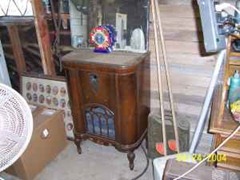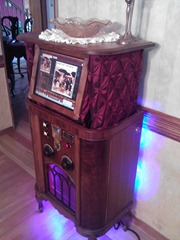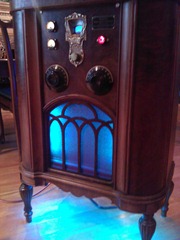PhaseShift is an excellent freeware (not open source yet, as far as I can tell, but here’s hoping) version of the RockBand genre of games. It’s even more interesting in that it can interoperate with guitar controllers, game drum kits, vocals, keyboards, MIDI, and even step pads (for Dance Dance Revolution style games, all at the same time!).
Very cool stuff.
What’s even better is that it can read both Frets on Fire songs as well as Stepmania format songs.
Mostly.
There are a ton of great song packs available out on the web, and most that I’ve found work seamlessly with PhaseShift. However, I’ve run into a bunch that do not.
The problem appears to be with the NOTES.MID file (the file that contains all the midi notes that is used by the game to show the onscreen “notes”).
After some digging using a hex editor (my favorite right now is Tiny Hexer), I discovered that in all the cases that failed, the NOTES.MID file appears to contain extranous junk. In many cases, it was a string of keyboard key names, in others it was code snippets. I’m guessing that whatever MIDI editor was used to generate those MID files didn’t properly clear garbage out or compact memory.
At any rate, FoFix appears to ignore the extra junk but PhaseShift does not.
Enter EOF
EOF is a song editor for “fretting” songs for use with rhythm games like Frets On Fire and PhaseShift. The latest version even has specific features to take advantage of elements of PhaseShift that don’t exist in Frets On Fire.
I found that simply using FILE – IMPORT MIDI and importing the NOTES.MID file into EOF, then immediately SAVING the file (and clicking YES to the prompt of “The file hasn’t changed, Save Anyway?”), fixed the problem for every single song I tried it on.
It worked so good in fact, that I wrote up a simple script in AutoHotKey to just run through all the files in a directory and perform those magic steps on them
/*
Convert songs via EOF
*/
F12::
Reload
return
F11::
loop, 1 {
;match anywhere in title
SetTitleMatchMode, 2
IfWinExist \Songs\
{
WinActivate
}
else
{
msgbox No Window
return
}
;Copy full path name
sleep 500
SendPlay ^+C
sleep 500
SendPlay ^+C
;msgbox %clipboard%
;Over to EOF
IfWinExist EOF -
{
WinActivate
}
else
{
msgbox No EOF
return
}
sleep 500
SendInput {F6}{F6}
sleep 500
SendInput %clipboard%{enter}
sleep 1000
Send ^s
sleep 500
Send ^s!FS
sleep 200
SendInput Y
sleep 200
SendInput Y
;Back to DirOpus
IfWinExist \Songs\
{
WinActivate
}
else
{
return
}
sleep 500
SendPlay {down}
}
Change the loop value from 1 to some count if you want to run it through more than one song at a time.
To explain:
The F12 key I’ve mapped to a reload just to make editing this script easier. It’s not necessary for actually running the script.
The F11 key hooks to the secret sauce.
I used the SEARCH feature in Directory Opus to list only the NOTES.MID files from all songs in all subdirectories of a folder I was targeting. If you don’t have DirOpus, you’ll need to recode the script to accommodate some other logic for getting the list of full pathnames to process.
The script starts by activating the DirOpus window and copying the full path to the selected NOTES.MID file.
Then it switches to EOF, (which needs to already be loaded), and performs the FILE – IMPORT function, pasting in the filename of NOTES.MID.
It then immediately does a FILE – SAVE (and supplies a few Y keypresses to answer the “save anyway” prompt.
And finally, it switches back to DirOpen and moves down to the next file.
It’s a hack to be sure. But it worked a treat for me.
Rock on!





